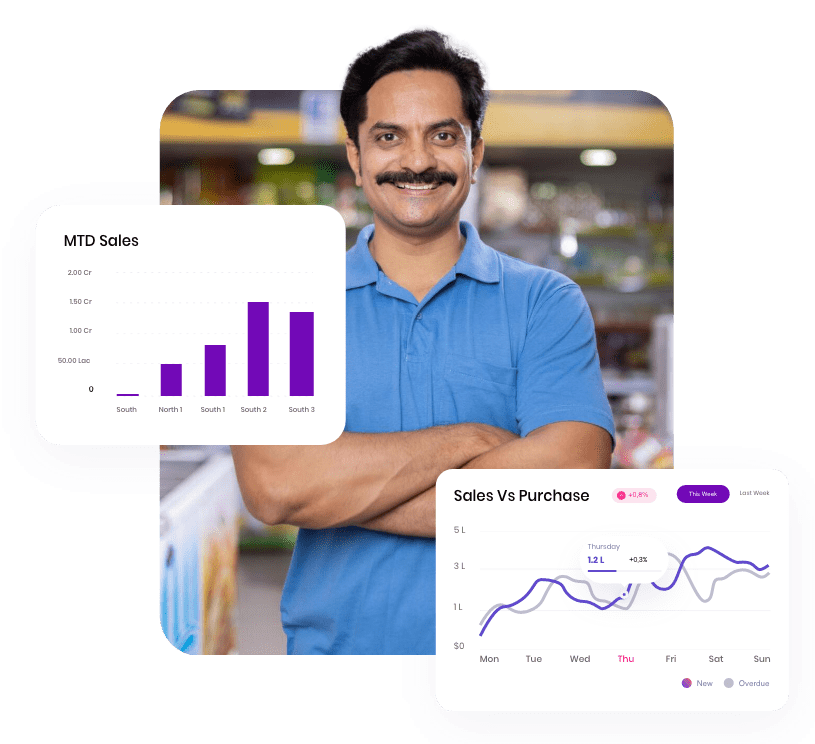














Brick and mortar stores are facing a plethora of challenges like Covid, Ecommerce, changing technology, dark stores, and app-based delivery stores. They are competing with online stores for their customer’s attention and share of wallet. They are struggling to compete with the price advantages that online stores can offer. As more customers go online and spend more time on the internet, it’s easier for them to buy online. Retail stores thrived on personal connections and human contact, but after 2 years of the pandemic, rising costs, and convenience of instant home delivery from a combination of e-commerce,10-30-minute delivery, and dark stores are eating into their advantage, and they are losing customers.
Ecommerce stores offer loyalty points and huge discounts and can collect and analyze data that enables them to target and retain customers through personalized recommendations and anticipating their needs.
In today’s day and age of dark stores and 10-minute grocery delivery stores in the unorganized retail space need technology intervention to leverage their key strengths of human connection, years of relationships built with the customers, and years of data collected in digitized stores. Retail stores can leverage technology to digitising and gain a competitive edge. The investment required for digital transformation of the retail stores is minimal and a onetime expense.
Retail store owners know their stores but do not know their locality. We can leverage retail analytics to understand customer behaviour. These can be used to create actionable insights to help serve the customers coming to the store. In-depth retail analytics that can help stores owners understand their locality and know their customers better and create a real-time picture of what’s working and what isn’t. This will enable them to stock the store with the right product and serve their customers better.
Retail stores know their customer better and can use loyalty programs to compete with the new e-stores. They can use real time insights along with their connect with their customers to build loyalty by delivering promotions, discounts, and cashback directly to the customers and creating a virtual loyalty program. This can help the retailers deliver a more rewarding shopping experience with personalized services, offers, discounts, and promotions. This also augments the stores relationship and ensures repeat visits and purchases from the store to ensure the customer feels recognized and valued.
Improving return on marketing investment:
Retail stores can use promotions and discounts to compete with e-commerce stores. But this affects their profit margins, and they do not have access to new technologies and tools to manage and measure the effectiveness of these activations. With the right technology infrastructure, they can measure the effectiveness of activations, promotions, discounts, new products, and seasonal changes on purchase patterns in real-time, and plan future inventory. Data can also help in measuring the effectiveness of promotions, loyalty programs, seasonality of the product purchasing patterns, and much more.

Analytics and insights can help retailers create eye-catching store layouts, use shelf-talkers to highlight the right products, and decide product placements to draw maximum attention.
Retail analytics and digitized stores have the potential to become a more integral part of the local social framework. SaaS services and deep data mining can help drive more offline orders through stores that are embedded in localities and gated communities. This can play a vital role in elevating the efficiencies of local retail stores.
Emerging technologies like, data and technology can help transform the unorganized retail sector. With high-speed internet becoming more prevalent in retail stores and easy-to-deploy digital solutions can help transform traditional retail stores to help deliver better customer service and build a better connection, the large local kirana stores have the potential to become local fulfilment centres for the connected and smart societies that are being built now. Data can also help stores understand and predict what customers are buying and anticipate stocking and build better efficiencies. This will further help strengthen the traditional retail stores and blur the lines between online and offline retail and make offline stores more competitive.

Botree Software’s extensive solutions for retail stores with the RS Market(i) platform can help store owners leverage technology and data to help modernise their stores and increase revenue. Get in touch, to learn more about our Store Connect, and Shopper Connect solutions and RS Market(I) platform to help you modernise your store.